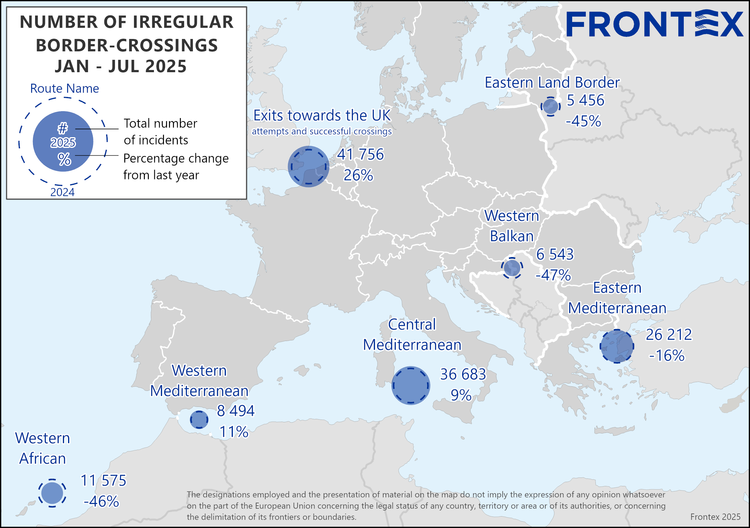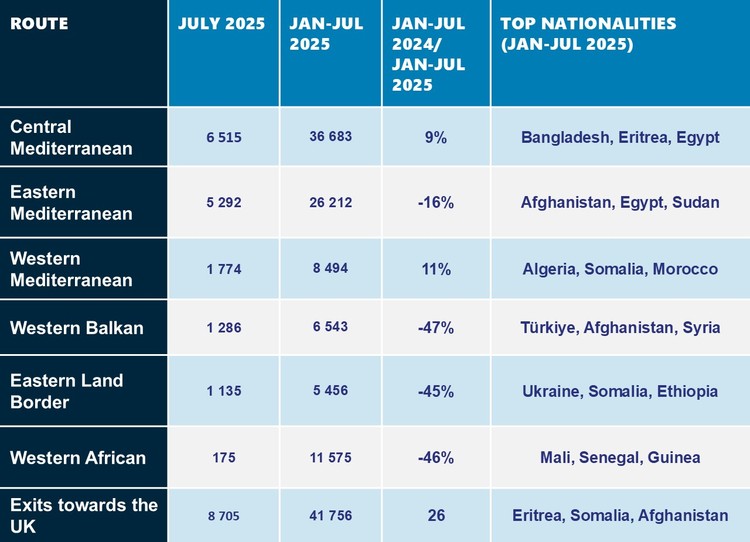Irregular border crossings into the European Union fell by 18%, to 95 200, in the first seven months of 2025, according to preliminary data from Frontex*. Most major migratory routes saw a decline, though pressure remains high across all three Mediterranean routes.
With over 3 400 Frontex officers supporting national authorities, the EU continues its commitment to border protection and saving lives at sea.
Crossings on the Eastern Mediterranean route dropped by 16%, to 26 200. However, a new migratory corridor between Eastern Libya and Crete has emerged in recent months, highlighting how smugglers adapt to shifting conditions. The number of irregular arrivals from Libya to Crete reached over 10 000 so far this year, more than four times the total from a year ago.
Despite the overall EU-wide decline, the Central Mediterranean route recorded nearly 36 700 irregular crossings, an increase of 9% compared to the same period in 2024. Libya is the main departure point. Smuggling networks in Libya remain highly organised, exploiting regional instability despite intensified anti-migration operations.
Irregular crossings on the Western Mediterranean route rose by 11%. Algerian-Moroccan smuggling networks offer various migration options to Spain, with costs ranging from EUR 900 to EUR 20 000 depending on the route. Popular paths include multi-leg journeys via Tunisia and Algeria, and alternate routes through Türkiye and the Western Balkans.
The Western African route saw a 46% drop in arrivals, with 11 600 detections this year and only 175 in July. The decline is linked to stronger preventive measures by departure countries in cooperation with the EU. Notably Mauritania, which has tightened border controls, boosted surveillance, and strengthened its migration policies.
Irregular crossings toward the UK via the Channel rose by 26% to 41 800 attempts. This increase is attributed to favourable weather, the use of harder-to-detect “taxi boats” that pickup people from various spots on the coast and more migrants per vessel. Smuggling networks remain active and agile, often disregarding migrants’ safety and putting their lives in serious danger.
One emerging tactic is “simultaneous departures,” where multiple overcrowded boats launch at once. Many vessels are unseaworthy and prone to engine failure, leaving migrants stranded or forced to swim. French authorities respond quickly, often with Frontex support. But boats that remain afloat continue toward the UK. The average number of people per boat has risen to nearly 60, with some carrying almost 100.
* Note: The preliminary data presented in this statement refer to the number of detections of irregular border crossings at the external borders of the European Union. The same person may cross the border several times in different locations at the external border.

